The bandicoot bandits causing a truffle kerfuffle
When Annabel Ellis tells people her PhD project is training bandicoots not to eat truffles, they usually react with surprise and amusement.
“They find it funny at first, but when I explain the serious purpose of it and the plight of the bandicoots, they’re always very supportive,” she said.
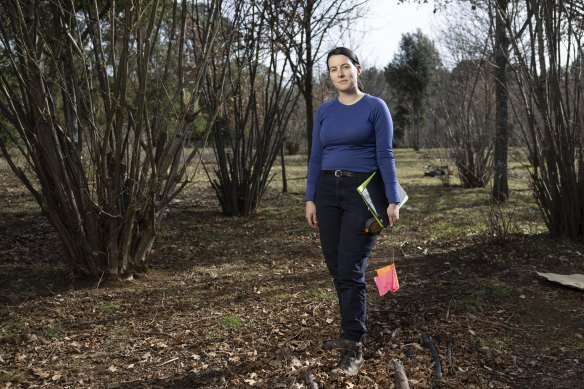
PhD student Annabel Ellis at the Terra Preta truffle farm near Braidwood in southern NSW.Credit: Alex Ellinghausen
The native marsupials are sniffing out and gorging themselves on thousands of dollars of black, or French, truffles a night, causing a headache for farmers in the emerging Australian truffle industry.
The omnivorous foraging creatures normally move quickly around the landscape nibbling insects and a range of native mushrooms and truffles.
But the unlikely gourmands have taken a particular liking to black truffles of the French variety, large underground edible fungi that sell for $2500 to $3000 a kilogram.
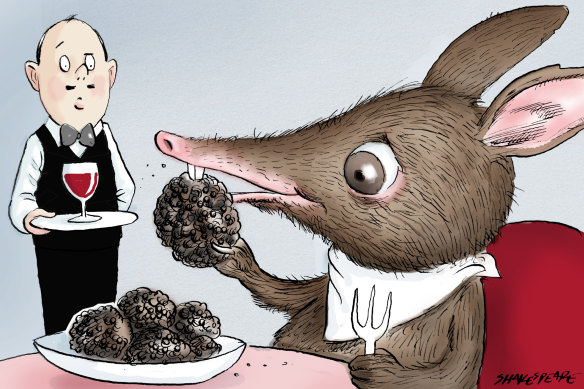
Credit: John Shakespeare
Camera footage shows that, when bandicoots find a truffle patch, they become positively gluttonous.
“Bandicoots are quite small; their stomach is quite small,” Ellis said. “I think they’re just gorging themselves on truffles. It’s quite amazing that they’re eating so much.”
Ellis said the bandicoots specifically went for the nicest and ripest of truffles. Underripe truffles would be nibbled and discarded, while they would never touch overripe or rotting truffles.
Given most bandicoot species are either threatened or endangered, any project that avoids conflict with humans will help the creatures’ odds of survival. In the worst-case scenario, some farmers might resort to trapping or poisoning the bandicoots, so training the animals to ignore the tasty treat is practical conservation work.
Ellis researched the behaviour of long-nosed bandicoots, found throughout eastern Australia, at Terra Preta truffle farm near Braidwood in southern NSW. The property is covered in trees and adjoins Monga National Park.
Under supervision of Professor Peter Banks, an expert in wildlife conservation biology, Ellis completed the practical phase of her research last week. This involved months of injecting the soil with truffle oil some distance away from the truffle patch, and observing how the bandicoots responded.
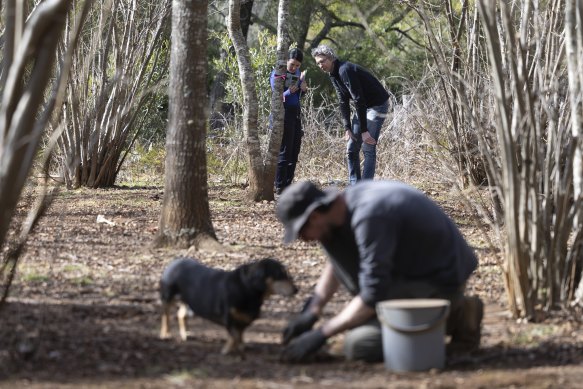
PhD student Annabel Ellis and Professor Peter Banks check a camera for footage of bandicoots, while farmer Keith Marshall and his dog Aldo search for truffles at his farm near Braidwood.Credit: Alex Ellinghausen
The theory was that the bandicoots would learn that the smell of truffles did not lead to the reward of food, allowing the farmers to protect thousands of dollars worth of crops throughout the season with a single $50 bottle of truffle oil.
“We had these little patches where there were odour points and the bandicoots would think ‘that smells good’, and they would dig there, and get nothing,” Banks said.
“Then Annabel would move it to new spots ... and that was the training process to teach them that it’s not rewarding.”
Banks said the idea came from previous research that trained native mice not to eat wheat. He thought to apply it to bandicoots and truffles after seeing an Instagram post from Terra Preta Truffles, which is owned by the Marshall family.
The next task for Ellis is to review hours of video recordings and write up her research, but the anecdotal results already prove the project has been successful.
Last year, the farm lost about $20,000 worth of truffles over the season, and this year only about $1000 worth.
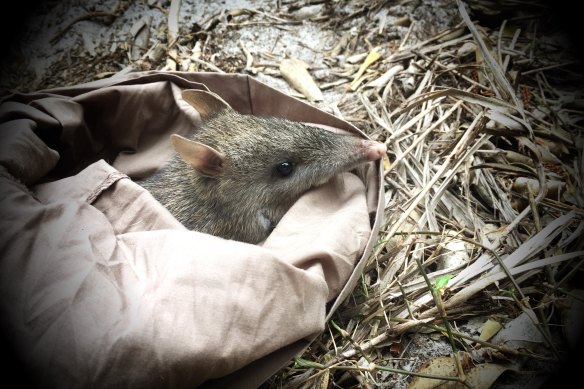
A long-nosed bandicoot captured and released as part of the research project.
Farmer Kate Marshall said the bandicoots clearly had good taste, and the family was glad to have them around the farm as it was a sign of a healthy ecosystem. However, she conceded they had also hurt the bottom line last year, so she was pleased to find what seemed to be a win-win solution.
“We do welcome them. It’s really lovely, and it’s not often you get to see these creatures making a comeback,” Marshall said. “It fits our ethos to have them, but it also fits our ethos to have Annabel and Peter fix the problem.”
The family have farmed truffles for 15 years, and Marshall said the bandicoot population had boomed during the wet years since the Black Summer bushfires in 2019-20. On the plus side, she noticed the truffles had less damage from slaters and slugs as the bandicoots ate them too.
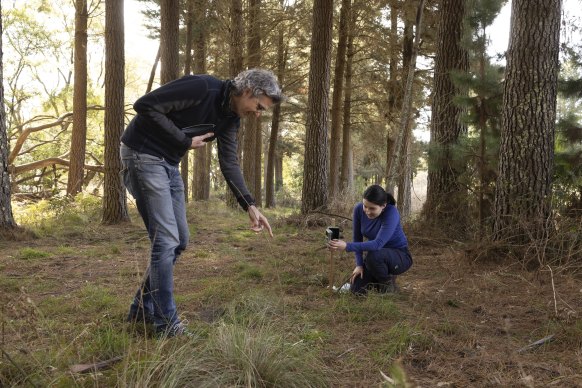
Banks and Ellis at the truffle farm.Credit: Alex Ellinghausen
Ellis said bandicoots played an important role in the environment.
“Their digging aerates the soil, they’re spreading the fungus, and by moving soil a lot, they’re reducing the leaf litter and the fire load,” she said.
Australians first harvested black truffles in 1999, but the nation is now the fourth-largest producer of black truffles in the world after France, Italy and Spain, according to AgriFutures. The industry is worth about $15 million a year and growing rapidly.
Truffles are grown under oak and hazel trees in cool climates, including in southern NSW and Victoria, and they are also susceptible to being eaten by rabbits and foxes. They are harvested in winter with the help of dogs to sniff them out.
Get to the heart of what’s happening with climate change and the environment. Sign up for our fortnightly Environment newsletter.